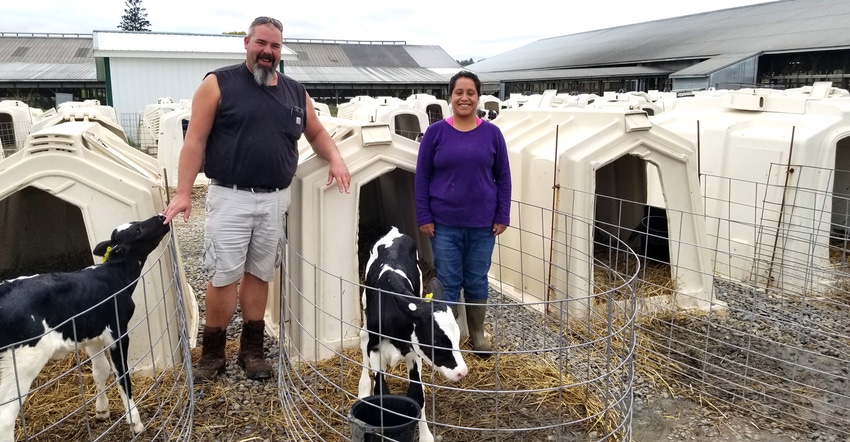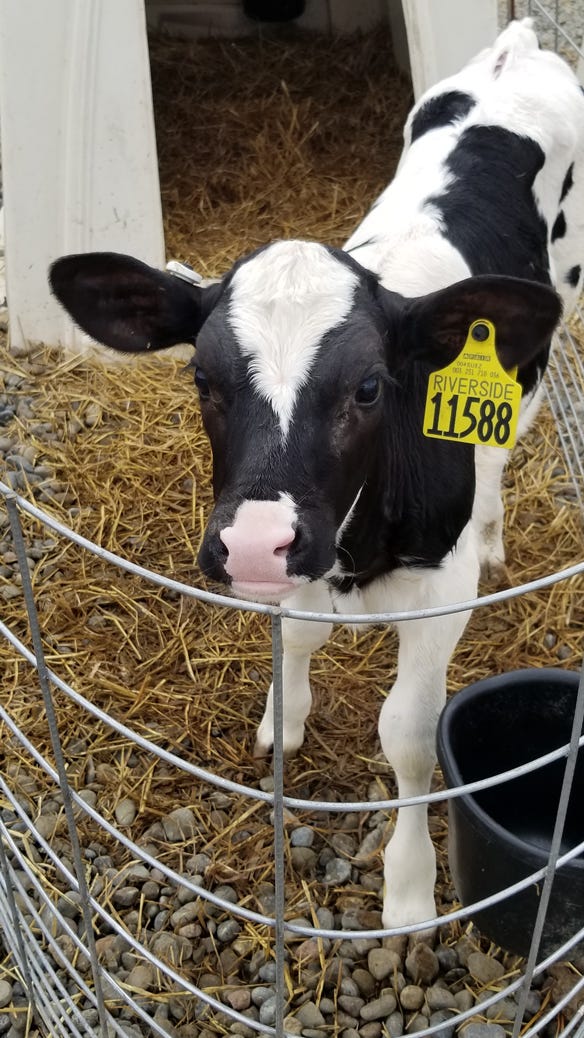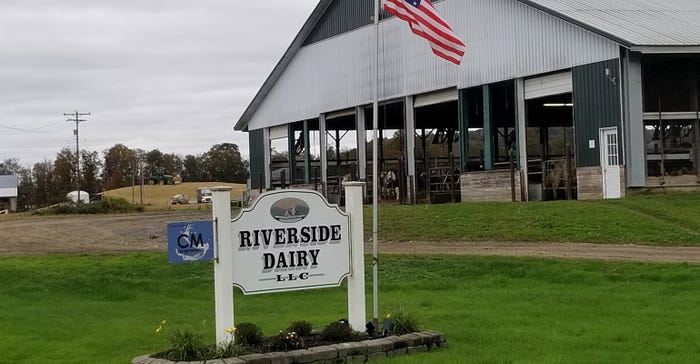October 27, 2021

With mature cow facility upgrades completed at Riverside Dairy in Cincinnatus, N.Y., owner Bob Eichorst was ready to turn his attention to calf care. That’s when Cornell Cooperative Extension dairy specialist Betsy Hicks invited Eichorst to participate in a “Focus on Farm Management” project.
The project, funded by the New York Farm Viability Institute, was designed to identify areas of improvement for the management of calves, transition cows and mature cows. Riverside Dairy was one of 15 farms participating.
Earlier changes that were designed to increase mature cow and heifer comfort at the farm established a baseline for continuing success.
“We had built a new freestall barn and remodeled a 1960s-era barn for our dry cows,” Eichorst says. “Better forage management and diligent genetic selection have also contributed to a gain of 10 pounds of milk per cow, 11 pounds per day per cow in components and an increase to more than 6 pounds in solids. And we were able to make the changes without sacrificing the longevity of our cows. I like old cows.”

CLEANING THE HUTCHES: Along with more feedings, other changes include adding fresh bedding to the hutches and more frequent cleanings.
Eichorst also likes baby cows and targets internal herd growth by retaining 65 replacements for every 100 of his mature cows.
“The earlier upgrades help our cows be healthier, more profitable and longer lasting, but while we were making the changes for our older cows, we were not giving as much time to calf management,” he says. “Betsy’s project provided the opportunity to focus our attention on our calves.”
Hicks worked with Eichorst to establish baseline data on the farm’s calves, including respiratory, fecal and overall health scoring.
“Over the course of a year, we identified and implemented strategies to bring the farm’s calf care up to the next level,” Hicks says.
Changes made
The feeding schedule has increased to three-times-a-day feeding with colostrum management a priority. Fresh bedding is added daily, and the calf hutches are cleaned more frequently.
The farm has dedicated two full-time people to calf care, along with Eichorst’s daughters and part-time workers who help on weekends.
“Someone is with the calves 24-7 now,” Eichorst says.
Instead of raising up to 100 calves a month, the number is now closer to 45.
The result?
“When we assessed the calves at the end of the project, the data showed noticeable improvement,” says Hicks, who collected data from 100 calves.
Riverside’s calves’ scores improved to nearly 87% with no signs of respiratory stress, compared to the benchmark of 73% for all 15 herds in the project.
“More dramatically, Riverside’s calves fecal scoring improved by 29% to 99% compared to the project group’s benchmark average of 83%,” Hicks says.
“Good health for mature cows starts with preventing illness when they are baby calves,” Eichorst says. “Today, our calves’ body condition, respiratory health and growth rate are outstanding.”
Hicks and Eichorst also reviewed benchmarks for farms of similar size to Riverside Dairy.

GOOD RESULTS: Riverside Dairy’s calf scores improved to nearly 87% with no signs of respiratory stress, compared to the benchmark of 73% for all 15 herds in the project, which was sponsored by New York Farm Viability Institute and conducted by Betsy Hicks of Cornell Cooperative Extension.
“The New York dairy industry is constantly striving for higher excellence. This project applied benchmarking and analysis to identify successful strategies to support each farms’ long-term sustainability and growth,” says David Grusenmeyer, executive director of the New York Farm Viability Institute.
“We are fortunate to have a lot of good dairies in central New York. Seeing what the neighbors are doing well pushes me to look to see what we can do better,” says Eichorst, who is quick to credit his farm crew for the farm’s success. “We have employees that care about the farm professionally and personally, communicate well, share ideas, and are excited to try new things.”
“Often times, farmers are surprised at how well they are performing compared to the benchmark, and it motivates them to reach our next-level recommendation,” Hicks says. “It works the other way around, too. If a farm’s numbers are among the bottom of the benchmark, it’s a red flag that changes are needed.”
With the enhancements to the health of his calves and his cows, the upgrades to facilities and protocols, and the dedicated teams at Riverside, it’s come with an added bonus for Eichorst: “I am having fun farming again.”
When it was time for taking stall measurements, every cow in the new freestall barn was lying down.
“We have a photo to prove it, and we did not disturb them,” he says.
For more information on how baseline and benchmarking data comparison can improve your dairy farm, contact Betsy Hicks at 607-391-2673 or email [email protected].
Dunn writes from her farm in Mannsville, N.Y.
About the Author(s)
You May Also Like




